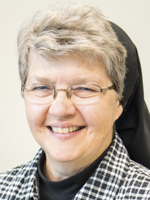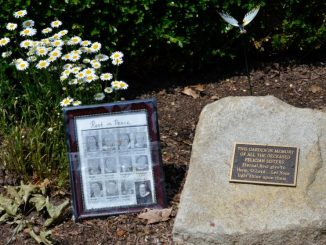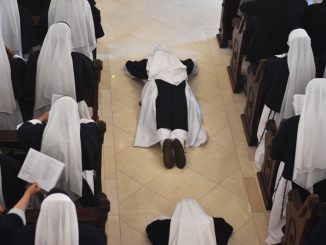
On July 11, 2020, dignitaries, parishioners, new seminarians, a number of diocesan employees, and eight religious sisters occupied pews at the Basilica of St. Peter in Columbia. The occasion, as noted in the July 16 Catholic Miscellany, was a celebration of the 200th anniversary of the establishment of a new diocese — ours, the Diocese of Charleston.
The previous evening, at the ordinations of Father Michael Cellars and Father William Frei at Holy Spirit Church on Johns Island, there were also sisters present. Some of them are visible in the photos on the front page of that same issue of The Miscellany. Every now and then our readers see features in which sisters of the diocese are highlighted. Given that were are in the midst of a season marking our history, it might be wise to look at some of what sisters have accomplished in the diocese and what they are doing now.
It did not take Bishop John England long to come to the conclusion that his ambitions for opening schools and charitable organizations across his tri-state diocese would benefit from having sisters. After a bit of fruitless searching, he decided that the best route to take would be the establishment of a new community, one based in his own diocese. Thus, the Sisters of Charity of Our Lady of Mercy, commonly known as the OLMs, were founded in 1829.
In short order, the community, which started with four young women, grew and took on leadership of schools and catechetical programs serving white and black persons, including children born free and children born into slavery. The sisters educated children in South Carolina, Georgia, and New Jersey, housed and cared for the poor, established orphanages and infirmaries and hospitals, and founded outreach centers. After the Civil War, they received commendation from the U.S. Congress for their care of injured and ill soldiers on both the Confederate and Union sides of the conflict.
When W. Thomas McQueeny wrote “Sunsets over Charleston”, describing those he termed “Visionaries, Luminaries, and Emissaries of the Holy City,” he cited the current superior of the OLM community, Sister Mary Joseph (born Andrea) Ritter, for her outreach ministry on Johns Island. In the chapter featuring her, he also cited Sister Carol Wentworth and the Nun Better Roofing Company, begun in the aftermath of Hurricane Hugo in 1989.
The OLM sisters have a tremendous legacy in the diocese, recognizable to this day through the outreach services of Neighborhood House in Charleston and Our Lady of Mercy Outreach on Johns Island, plus two Charleston hospitals: Roper St. Francis and Bon Secours St. Francis. The sisters also are known for grants they provide to many charitable works, based on the proceeds of sales of property which they owned corporately (not individually) and the contributions of benefactors.
When the University of Georgia undertook a project which resulted in a three-volume series, “South Carolina Women: Their Lives and Times”, they included two well-known Catholics, former Chief Justice Jean Toal, recently retired from the S.C. Supreme Court, and the 19th century Mother Baptista Lynch, sister of the third bishop of Charleston, Patrick Lynch. Mother Baptista’s story tells of her rescuing the 200 students of the Ursuline Academy in Columbia when Sherman’s troops set the city, including her convent school, ablaze.
It relates her confrontation with Sherman and his acquiescence to her demand that his troops help move the girls and any goods they could salvage when they found a suitable place to relocate temporarily. It didn’t take Mother Baptista long, after a temporary move to a site called Valle Crucis, to garner the funds and manpower to get a new school going.
In the early 20th century, St. Katharine Drexel contributed assets from the Philadelphia Drexel family fortune to help build parishes and schools serving African American and Native American populations here and elsewhere. For example, youth from St. Gerard in Aiken attended boarding schools in Virginia during their high school years and returned with a rich academic, religious, and professional education.
To this day, parishioners there will say that Mother Katharine and her Sisters of the Blessed Sacrament saved lives in an era of lynchings.
Another saint, Mother Teresa of Kolkata, visited the diocese in the early 1980s and heightened our awareness of the plight of the poor, including those who were spiritually impoverished and deprived of affection.
It doesn’t require saints and luminaries, though, to realize that, for nearly 200 years, a vast array of ministries and institutions have been staffed and supported by sisters. Dozens upon dozens of different orders and religious communities have lent sisters to the diocese. And sometimes they have lent their assets too, as the OLM’s and St. Katharine Drexel have.
One of the most touching stories I heard while working on the book which charts the history of the diocese came from Sister Nancy Hendershot, a Sister of Charity of St. Augustine. It was her community that was invited by Bishop Emmet Walsh to build and staff a Catholic health care facility in Columbia, Providence Hospital. Though many supporters had gathered funds, the nation and the state were still in the throes of the Great Depression. Somehow, though, the hospital was built. Much later it came to light that the sisters, whose community headquarters was in Cleveland, Ohio, had mortgaged their motherhouse to finance construction.
The CSA community today, through its foundations and grants, funds many services to the poor, the elderly, and the under-educated of South Carolina. It has also provided a forum in which sisters from all over the United States, and from other nations who are missioned here, get to know one another and to collaborate in ministry.
These are just a few examples of what sisters have done and continue to do, often unheralded. As of a late 2019 headcount, there were 22 religious communities of women — with one, two, three, four, and more representatives — serving in South Carolina today. We are educators, administrators, nurses, caregivers, social workers, catechists, parish ministers, prison and hospital chaplains, musicians, artists, writers, receptionists, spiritual directors, hospitality providers at retreat centers, diocesan officers, and directors of outreach centers, among other things. One group, the Order of St. Clare (or Poor Clares), is a contemplative powerhouse of prayer in the Upstate.
We work for God and for the common good. We expect to be around for some time to come. That is because we are not “employed” but rather are missioned. Any compensation we receive for our services goes to our religious communities. And these communities pool resources to provide for many unfunded and under-funded services and to amass grant monies (as my own community does) to support tuition for children and youth and to provide services for the elderly poor and other such causes.
The treasurer of my religious community likes to remind us that we never retire. That is because we are committed to a lifetime of prayer and service — and, as Bishop John England more than intimated, we have a history of sizing up needs and figuring out ways to get good things done.




